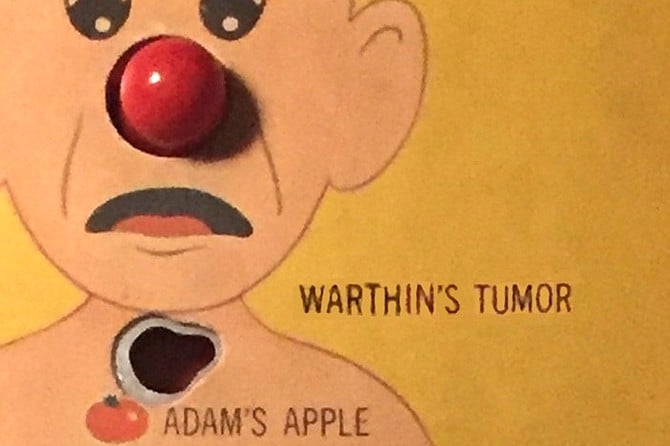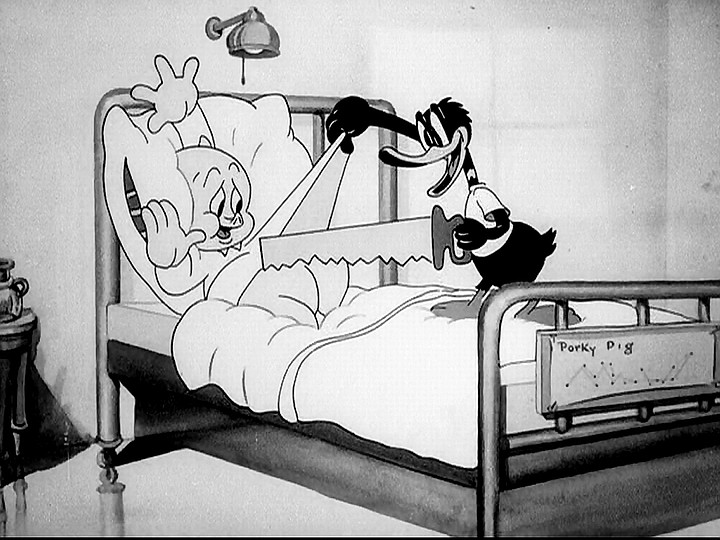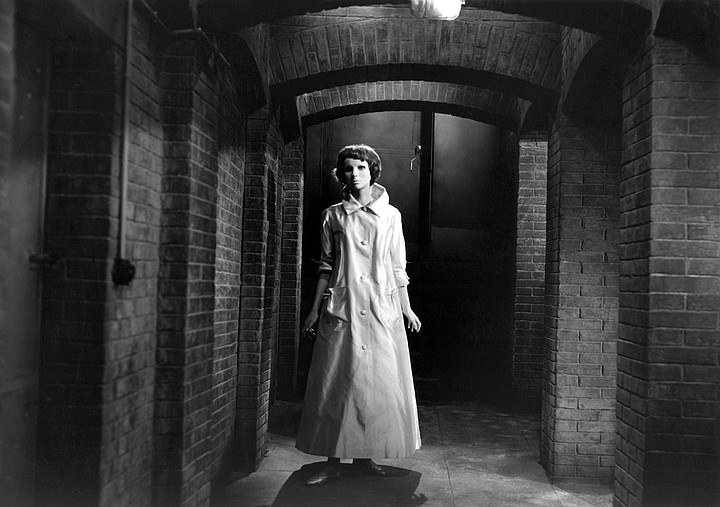 Facebook
Facebook
 X
X
 Instagram
Instagram
 TikTok
TikTok
 Youtube
Youtube

“Testing! Testing!” The voice still worked. No sign of hearing impairment either. It was 3:50 p.m. and in the time it took to tilt my head clockward, a nurse was at my side. “Would you happen to have a Coke?” I groggily rasped. “Pepsi?” she smiled. (Pepsi owns this town. 5 years working in Balboa Park taught me that.) It could have been a can of flat Shasta for all I cared. It went down smoother than a goblet of fresh squeezed high fructose corn syrup. I silently thanked God and raised a glass to my surgeon.
It began in 2008 with a small bump on the right side of my neck. Like an egg yolk in a Jell-O mold, it appeared without warning, slung between my jaw and Adam’s apple just north of the jugular. Day passed into night while waiting to be seen at the Scripps Mercy E.R. in Hillcrest. After finally gaining access to the consulting room, the hospitalists on call numbed and drained the growth within a matter of minutes. Assuring me that the cyst was benign, they sent me home with souvenir parting gifts: a stainless steel scalpel approximately four inches in length, a wad of gauze, two industrial strength bandages, and instructions on how to manually slice and dress the wound should another lump appear. I’m no Rambo. The surgical knife made a comical addition to my medicine cabinet.

“Is it …?” my dinner companion faltered when the bump made its return engagement a few years back. I assured him that it wasn’t cancerous, just a damn aesthetic nuisance. The clinical name for the protuberance was papillary cystadenoma lymphomatosum, or Warthin’s tumor. This slow-growing tumor of the salivary gland is generally situated in front of the ear or under the chin. The cyst may increase in size over time, but few become cancerous. It caused no pain and a hiked-up button-down collar usually provided sufficient camouflage. In a pinch, there was always the Peter Bogdanovich ascot wrap as a means of concealment.
One growth led to another, and by around this time last year, the egg yolk had blossomed into a meatball. By Thanksgiving, it had swelled to Idaho spud proportions. Come Christmas, the growth settled into something the size of Ray Milland’s bean in The Thing With Two Heads. Having shopped it around to several clinics and Urgent Care Facilities, it soon became clear that removal would require an incision so close to the jugular vein that no one short of a skilled surgeon would touch it. A scant five months from Medicare eligibility, I began viewing mask restrictions in a positive light and took to wearing a bandana that covered my face as well as shielding my carbuncle from public view.
Prior to this, the only time I had been drugged to the point of unconsciousness, at least professionally speaking, was a tonsillectomy at age five. Arthroscopic surgery to repair a trick knee — the trick being it couldn’t support 600 lbs. — is the closest I’ve come to going under the knife. I was a slave to Philip Morris for 40 years, am overweight, and have the musculature of veal. More than anything, the thought of never recovering from the anesthesia was wreaking havoc on my sleep patterns. The docs put me through a battery of tests, all of which I aced, much to my shock and delight. The surgery was a go.
No one played a bigger part in ensuring a happy ending than Dr. Brianna Harris, Director of Microvascular Surgery at SENTA Clinic. The stock doctor’s office icebreakers (“What was the last movie you paid to see?,” “Take it easy doc, I was only put together with one screw!”) wouldn’t do. This time I listened, and when it came time to ask questions, I followed a Jack Webb “just the facts” mode of interrogational pursuit. Comparisons to ghosts from medical movies past were inevitable. The on-my-back view from the gurney as the ceiling lights flew past overhead. Circular lights the size of Captain America’s shield were used to illuminate the operating room. “100, 99, 98… 3.” (That’s the Ed Norton method of counting backwards to determine when the anesthesia kicked in.) All totaled, the procedure began at 11 am and lasted 4 ½ hours. Forty-five minutes after that, I was in a wheelchair being escorted to my ride home.
I spent the following week recuperating at a friend’s. As if I weren’t a big enough drain as is, there was the matter of the surgical drain safety-pinned to my shirt and in need of emptying twice a day. It was next to impossible for me to siphon the blood unassisted. Over the first three days, I was lucky to average three hours of restful slumber a night. Doctor’s orders were to sleep at a 30-45 degree angle. Ever try taking a protractor to bed with you? I was terrified to sleep in a bed, lest I roll over only to awaken like Jack Woltz, floundering in blood-covered sheets minus the horse’s head. Reading or focusing on a movie was an impossibility. Here’s where the narcotic effect often associated with binge-watching think-free television programming came in handy. Prior to my recovery, I had never seen so much as a minute of Project Runway. It wasn’t the Vicodin — I laid off the painkiller after the first day — but it was in God’s plan that during this hazy, upsadaisy start of the healing process that I turned to Heidi and Tim for comfort. A completist, I have since logged every season and am currently working my way through Making the Cut.

In my youth, Chicago plumbing, being what it is, prevented me from taking showers. My bathing was done in a tub, a habit that persists to this day. For one month, I was not allowed to submerge my wound in water. Nor could I shave. I was told to expect mild swelling at the incision site and numbness in all or part of my ear. For the first two weeks, my mouth was like a mailslot clamped tight. The only foods capable of passing through my lips were soup and toast before gradually working my way up to thin crust pizza. Lucky for me, the pain never rose far above the level of discomfort. Dr. Harris wasn’t kidding when she assured me that she could take apart salivary glands as I would a movie.

Day five brought the onset of nightmares associated with a French horror film from 1960 that was one of the few to attach itself like a steel clamp to my central nervous system. George Franju’s Eyes Without a Face stars Pierre Brasseur as a plastic surgeon looking to heal the past by performing a face transplant on his daughter (Édith Scob), disfigured in a car accident that was his fault. He kidnaps and murders a young woman with the intent of peeling back her face and grafting it onto his daughter’s. The sound of yelping dogs echoing from the cellar below amplifies the disquiet. In the dream, my ear hitting the pillow felt like an inflatable life raft bumping up against the rocks. A slight twist of the neck, and my ear stuck to the pillow, causing the incision to split open as the contents of my head spilled onto the pillow. By way of thanks, I gifted Dr. Harris with a blu-ray copy from the Criterion Collection. Nothing but the best for her.
The fear derived from Eyes Without a Face was nothing compared to the anxiety often associated with having one’s neck split open. (Confidentially, most of my friends were shocked that I made it to 65 without once being operated on.) A dullness around the ear persists — when I go to scratch the tip, I can’t feel the itch — but not enough to cause any more sleepless nights. Thanks to the two Briannas (Dr. Harris and her assistant) and my primary care physician Dr. Nicole O’Neal for being the music needed to soothe this savage beast’s butterflies.
—Scott Marks


“Testing! Testing!” The voice still worked. No sign of hearing impairment either. It was 3:50 p.m. and in the time it took to tilt my head clockward, a nurse was at my side. “Would you happen to have a Coke?” I groggily rasped. “Pepsi?” she smiled. (Pepsi owns this town. 5 years working in Balboa Park taught me that.) It could have been a can of flat Shasta for all I cared. It went down smoother than a goblet of fresh squeezed high fructose corn syrup. I silently thanked God and raised a glass to my surgeon.
It began in 2008 with a small bump on the right side of my neck. Like an egg yolk in a Jell-O mold, it appeared without warning, slung between my jaw and Adam’s apple just north of the jugular. Day passed into night while waiting to be seen at the Scripps Mercy E.R. in Hillcrest. After finally gaining access to the consulting room, the hospitalists on call numbed and drained the growth within a matter of minutes. Assuring me that the cyst was benign, they sent me home with souvenir parting gifts: a stainless steel scalpel approximately four inches in length, a wad of gauze, two industrial strength bandages, and instructions on how to manually slice and dress the wound should another lump appear. I’m no Rambo. The surgical knife made a comical addition to my medicine cabinet.

“Is it …?” my dinner companion faltered when the bump made its return engagement a few years back. I assured him that it wasn’t cancerous, just a damn aesthetic nuisance. The clinical name for the protuberance was papillary cystadenoma lymphomatosum, or Warthin’s tumor. This slow-growing tumor of the salivary gland is generally situated in front of the ear or under the chin. The cyst may increase in size over time, but few become cancerous. It caused no pain and a hiked-up button-down collar usually provided sufficient camouflage. In a pinch, there was always the Peter Bogdanovich ascot wrap as a means of concealment.
One growth led to another, and by around this time last year, the egg yolk had blossomed into a meatball. By Thanksgiving, it had swelled to Idaho spud proportions. Come Christmas, the growth settled into something the size of Ray Milland’s bean in The Thing With Two Heads. Having shopped it around to several clinics and Urgent Care Facilities, it soon became clear that removal would require an incision so close to the jugular vein that no one short of a skilled surgeon would touch it. A scant five months from Medicare eligibility, I began viewing mask restrictions in a positive light and took to wearing a bandana that covered my face as well as shielding my carbuncle from public view.
Prior to this, the only time I had been drugged to the point of unconsciousness, at least professionally speaking, was a tonsillectomy at age five. Arthroscopic surgery to repair a trick knee — the trick being it couldn’t support 600 lbs. — is the closest I’ve come to going under the knife. I was a slave to Philip Morris for 40 years, am overweight, and have the musculature of veal. More than anything, the thought of never recovering from the anesthesia was wreaking havoc on my sleep patterns. The docs put me through a battery of tests, all of which I aced, much to my shock and delight. The surgery was a go.
No one played a bigger part in ensuring a happy ending than Dr. Brianna Harris, Director of Microvascular Surgery at SENTA Clinic. The stock doctor’s office icebreakers (“What was the last movie you paid to see?,” “Take it easy doc, I was only put together with one screw!”) wouldn’t do. This time I listened, and when it came time to ask questions, I followed a Jack Webb “just the facts” mode of interrogational pursuit. Comparisons to ghosts from medical movies past were inevitable. The on-my-back view from the gurney as the ceiling lights flew past overhead. Circular lights the size of Captain America’s shield were used to illuminate the operating room. “100, 99, 98… 3.” (That’s the Ed Norton method of counting backwards to determine when the anesthesia kicked in.) All totaled, the procedure began at 11 am and lasted 4 ½ hours. Forty-five minutes after that, I was in a wheelchair being escorted to my ride home.
I spent the following week recuperating at a friend’s. As if I weren’t a big enough drain as is, there was the matter of the surgical drain safety-pinned to my shirt and in need of emptying twice a day. It was next to impossible for me to siphon the blood unassisted. Over the first three days, I was lucky to average three hours of restful slumber a night. Doctor’s orders were to sleep at a 30-45 degree angle. Ever try taking a protractor to bed with you? I was terrified to sleep in a bed, lest I roll over only to awaken like Jack Woltz, floundering in blood-covered sheets minus the horse’s head. Reading or focusing on a movie was an impossibility. Here’s where the narcotic effect often associated with binge-watching think-free television programming came in handy. Prior to my recovery, I had never seen so much as a minute of Project Runway. It wasn’t the Vicodin — I laid off the painkiller after the first day — but it was in God’s plan that during this hazy, upsadaisy start of the healing process that I turned to Heidi and Tim for comfort. A completist, I have since logged every season and am currently working my way through Making the Cut.

In my youth, Chicago plumbing, being what it is, prevented me from taking showers. My bathing was done in a tub, a habit that persists to this day. For one month, I was not allowed to submerge my wound in water. Nor could I shave. I was told to expect mild swelling at the incision site and numbness in all or part of my ear. For the first two weeks, my mouth was like a mailslot clamped tight. The only foods capable of passing through my lips were soup and toast before gradually working my way up to thin crust pizza. Lucky for me, the pain never rose far above the level of discomfort. Dr. Harris wasn’t kidding when she assured me that she could take apart salivary glands as I would a movie.

Day five brought the onset of nightmares associated with a French horror film from 1960 that was one of the few to attach itself like a steel clamp to my central nervous system. George Franju’s Eyes Without a Face stars Pierre Brasseur as a plastic surgeon looking to heal the past by performing a face transplant on his daughter (Édith Scob), disfigured in a car accident that was his fault. He kidnaps and murders a young woman with the intent of peeling back her face and grafting it onto his daughter’s. The sound of yelping dogs echoing from the cellar below amplifies the disquiet. In the dream, my ear hitting the pillow felt like an inflatable life raft bumping up against the rocks. A slight twist of the neck, and my ear stuck to the pillow, causing the incision to split open as the contents of my head spilled onto the pillow. By way of thanks, I gifted Dr. Harris with a blu-ray copy from the Criterion Collection. Nothing but the best for her.
The fear derived from Eyes Without a Face was nothing compared to the anxiety often associated with having one’s neck split open. (Confidentially, most of my friends were shocked that I made it to 65 without once being operated on.) A dullness around the ear persists — when I go to scratch the tip, I can’t feel the itch — but not enough to cause any more sleepless nights. Thanks to the two Briannas (Dr. Harris and her assistant) and my primary care physician Dr. Nicole O’Neal for being the music needed to soothe this savage beast’s butterflies.
—Scott Marks
Comments